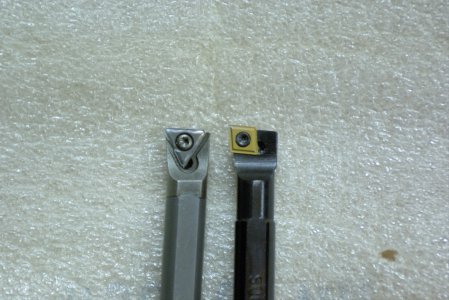- Joined
- Jan 22, 2012
- Messages
- 655
I've also had a bit of trouble with the second version you show. If you have a through hole a boring bar works great but not so much for a blind hole with a flat bottom. I've used a center cutting end mill to get the flat bottom but without a tailstock DRO scale it was hard to get an accurate depth as the markings on my tailstock aren't very good. On larger diameter holes you can use the boring bar to get the bottom flat as you will then have clearance for the bar to cut from the centerline out to the final diameter.

